How master craftsmen in Vietnam create 50,000 incense sticks a day for Lunar New Year
Isaiah Reynolds,Abby Narishkin,Nguyễn Lê Hang

- At the start of every year, incense sticks are used to celebrate Tết, or Vietnamese Lunar New Year.
- Due to shifting industry and demands, the local incense producers had to readjust their strategy.
Every Lunar New Year, the Vietnamese village of Quảng Phú Cầu is immersed in an ocean of pink.
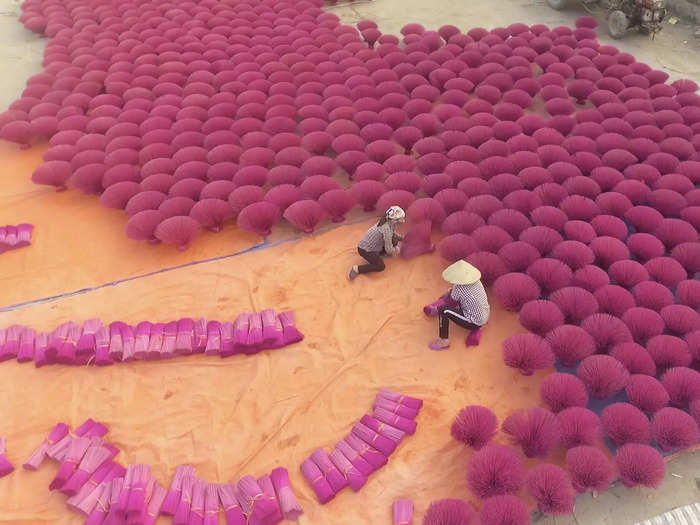
Nearly 3,000 households — about 70% of the entire town — contribute to the production of the incense sticks.
This is all conducted in preparation for Tết, or Vietnamese Lunar New Year, the country's most important holiday.
Used in religious ceremonies year-round, the incense sticks carry great spiritual significance in the Southeast Asian nation.
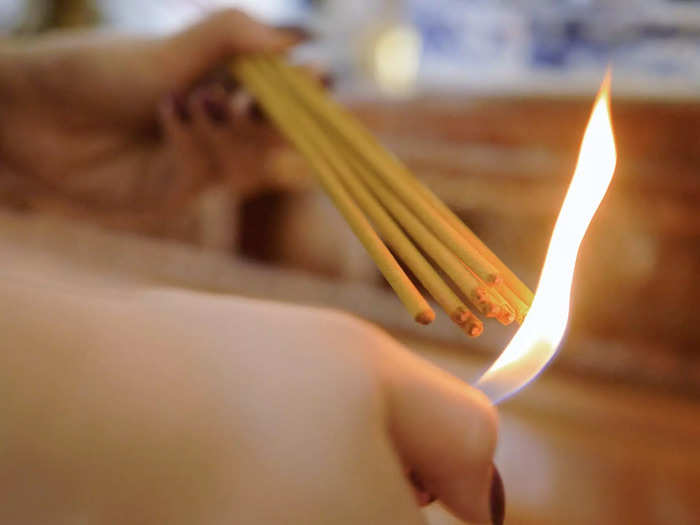
During Tết, or Vietnamese Lunar New Year, incense is used to invite deceased ancestors back into homes to celebrate together. The tradition is of deep significance in carrying familial health and prosperity into the new year.
The line of smoke emitted once the incense burns is thought to act as a bridge between the spiritual and physical worlds.
For generations, incense stick production was a leading industry for Quảng Phú Cầu residents. However, recent changes drastically shifted the industry.
In 2019, India restricted Vietnamese imports, virtually destroying the Quảng Phú Cầu incense producers' biggest buyer.
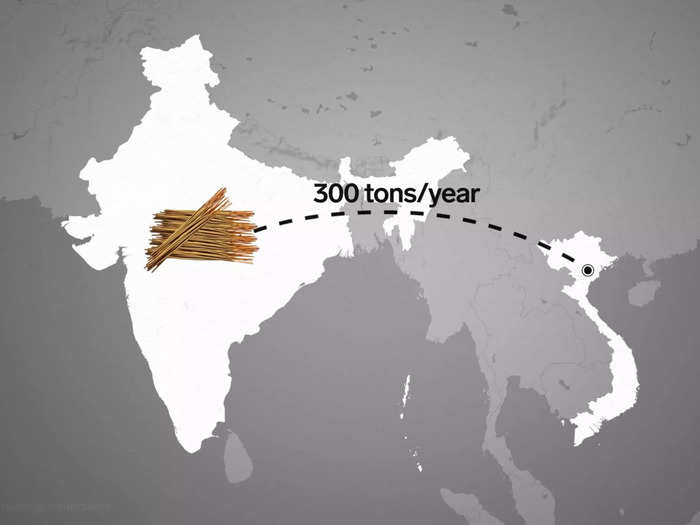
Used for year-round religious worship, India's incense demand fueled production in many Vietnamese villages. An estimated 80-90% of all incense imports into India came directly from Vietnam.
The trade pivot left many Vietnamese producers with a major gap between established supply and demand.
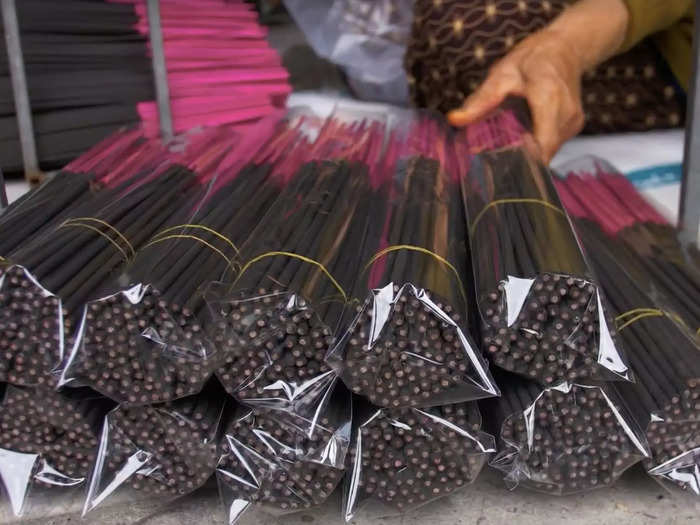
India's Ministry of Commerce recategorized the import of incense sticks into India from "free" to "restricted" in an effort to bolster domestic production.
Because of these new restrictions, Vietnamese incense stick producers were forced to find a new business model. They eventually changed the entire production process, found buyers in Vietnam, and got a little creative.
"In the old days, nearly 100% of the villagers were making incense. Currently in our village, there are only two or three large manufacturers left," master incense maker Nguyễn Thi told Insider.
Thi changed the product to appeal to Vietnamese buyers, and made considerable adjustments to the meticulous and orthodox process.
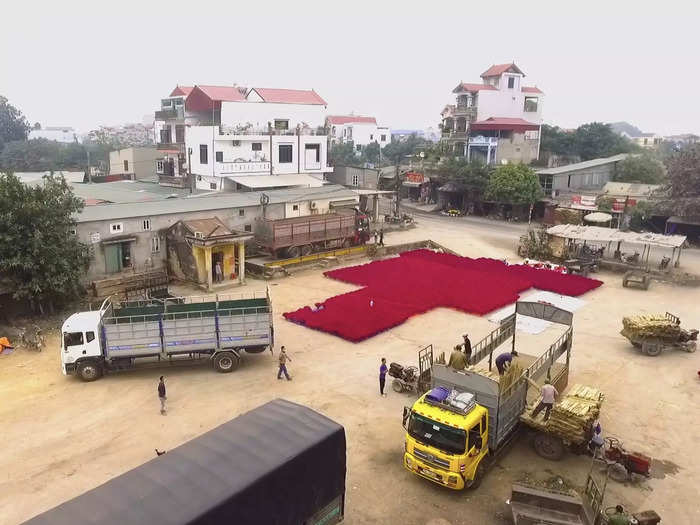
Post-2019, Thi has redirected to appeal to domestic wholesalers at $0.65 per bunch and catered to Vietnamese tastes. He redesigned the incense sticks to be longer, dyed them pink, and added a fragrance.
By incorporating machines, Thi was also able to speed up production to crafting 50,000 sticks a day from only 500 a day by hand. By partnering with 12 other incense makers in his village, Thi's cooperative has become the largest in Quảng Phú Cầu.
Determined to recover revenue lost from India, Thi registered his incense sticks with the Vietnamese National Office of Intellectual Property. His products are now easily discoverable with traceable barcodes by potential wholesalers.
The incense stick is made of two parts: the core stick and the incense powder.
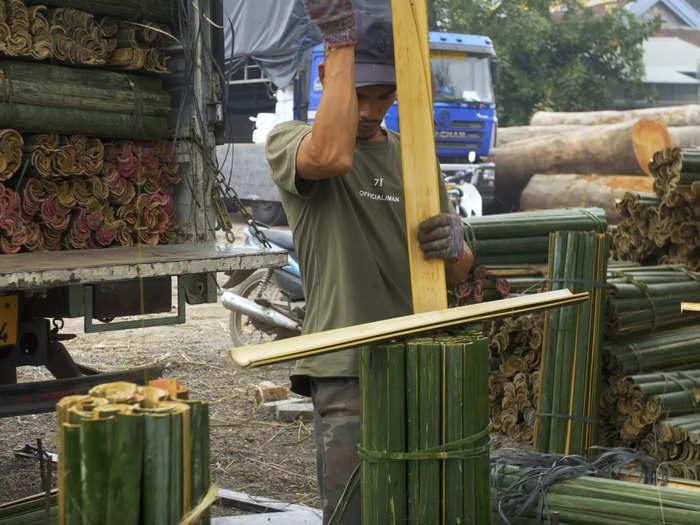
The core is made from bamboo-like trees grown in a nearby forest. The bark is harvested, bunched, weighed and then sold.
Down the road, producers split the bark into smaller sticks and lay them out to dry all around town. Next: the chopper.
The machine chopper allows thousands of sticks to be shaped in one day. "After chopping," Thi said, "the sticks are sanded and polished, and then cut into the appropriate length to be made into incense sticks."
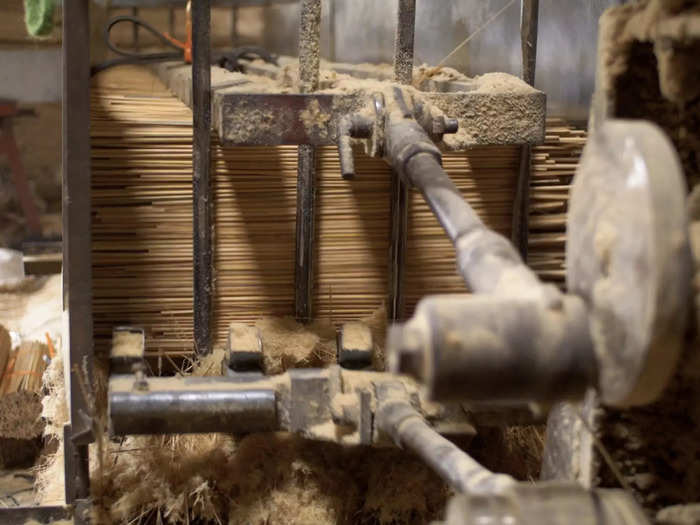
Next, the cut sticks are shipped to Thi's incense factory where workers group them into bunches.
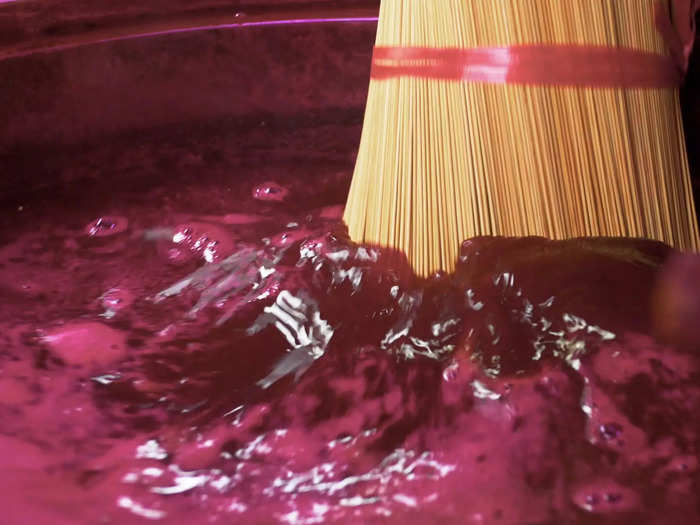
They are dipped in either pink dye, representing Vietnam's national lotus flower, or red dye, commemorating the country's flag.
The bunches are meticulously fanned out around the town to dry, saturating Quảng Phú Cầu with its famed fuchsia hue.
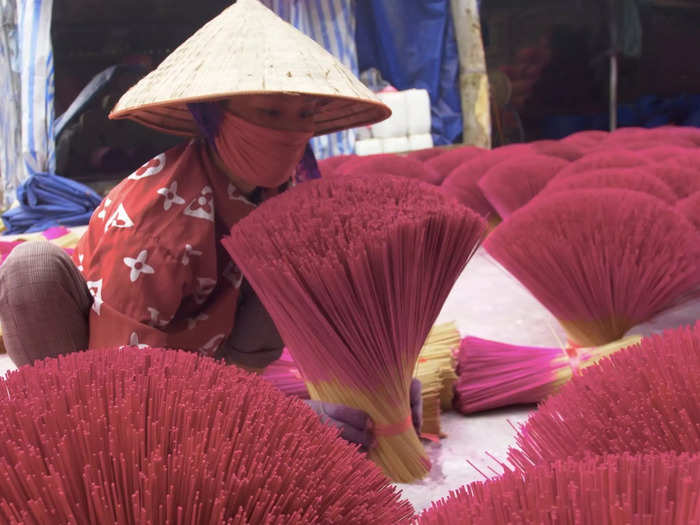
Across the factory, the incense powder is prepared. Using secret recipe passed through generations, proportions of harvested canarium sap is combined with charcoal. The mixture gives the sticks their unique scent once burned.
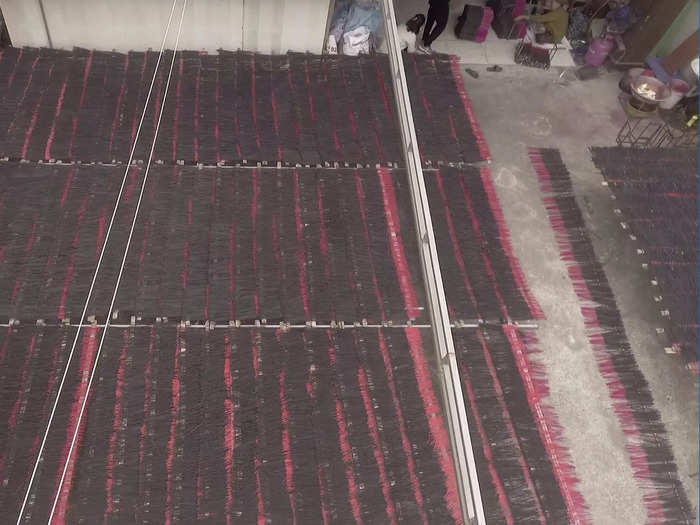
Once completely dried, the dyed incense sticks are fed into machines to be coated with the incense powder. Finally, workers package the dried and perfected sticks into plastic, ready for distribution.
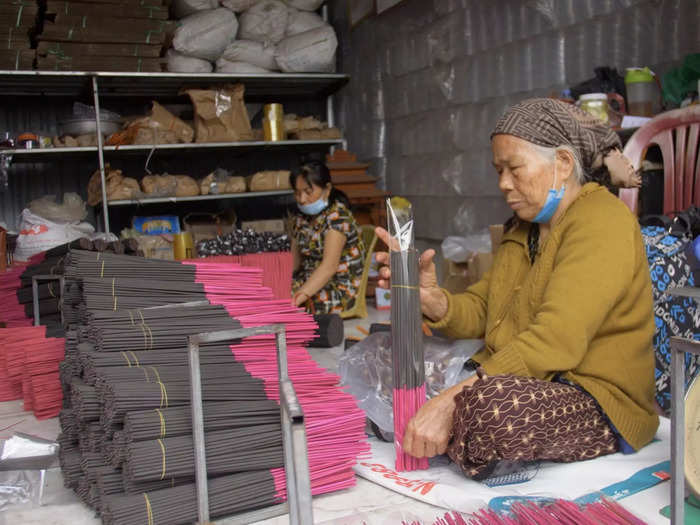
From Quảng Phú Cầu across Vietnam, Thi’s modern adaptation ensures the vibrant and festive tradition continues.
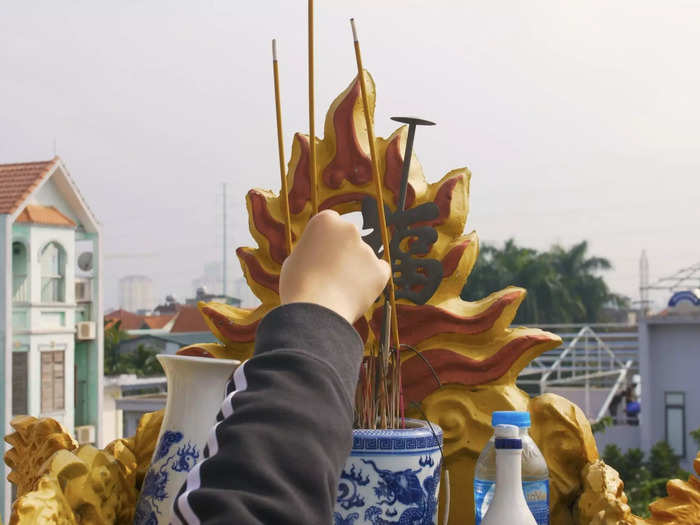
Every year, Thi and the collective of incense producers must prepare for Tết. In the lead up to the New Year, Thi usually earns more than 40% of his revenue.
Popular Right Now
Advertisement